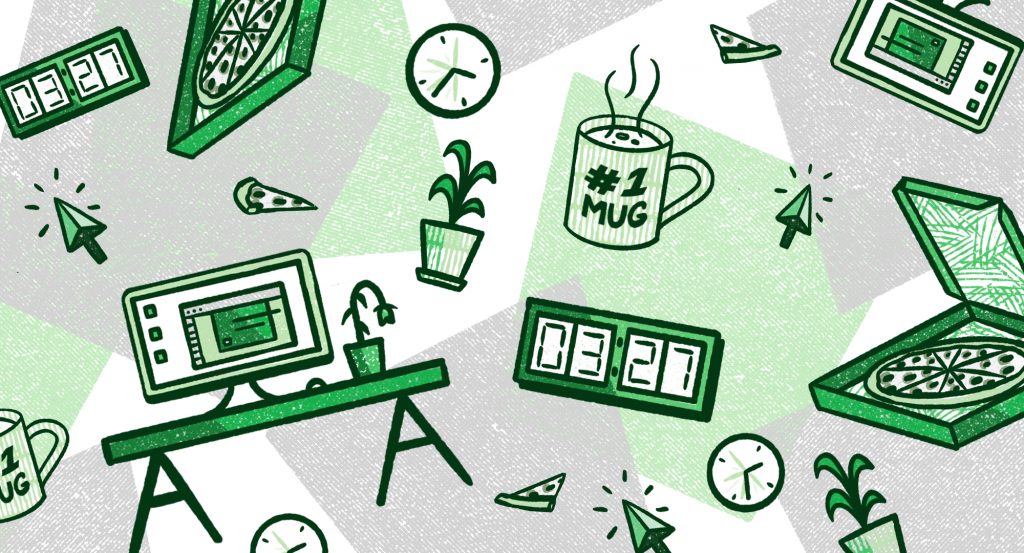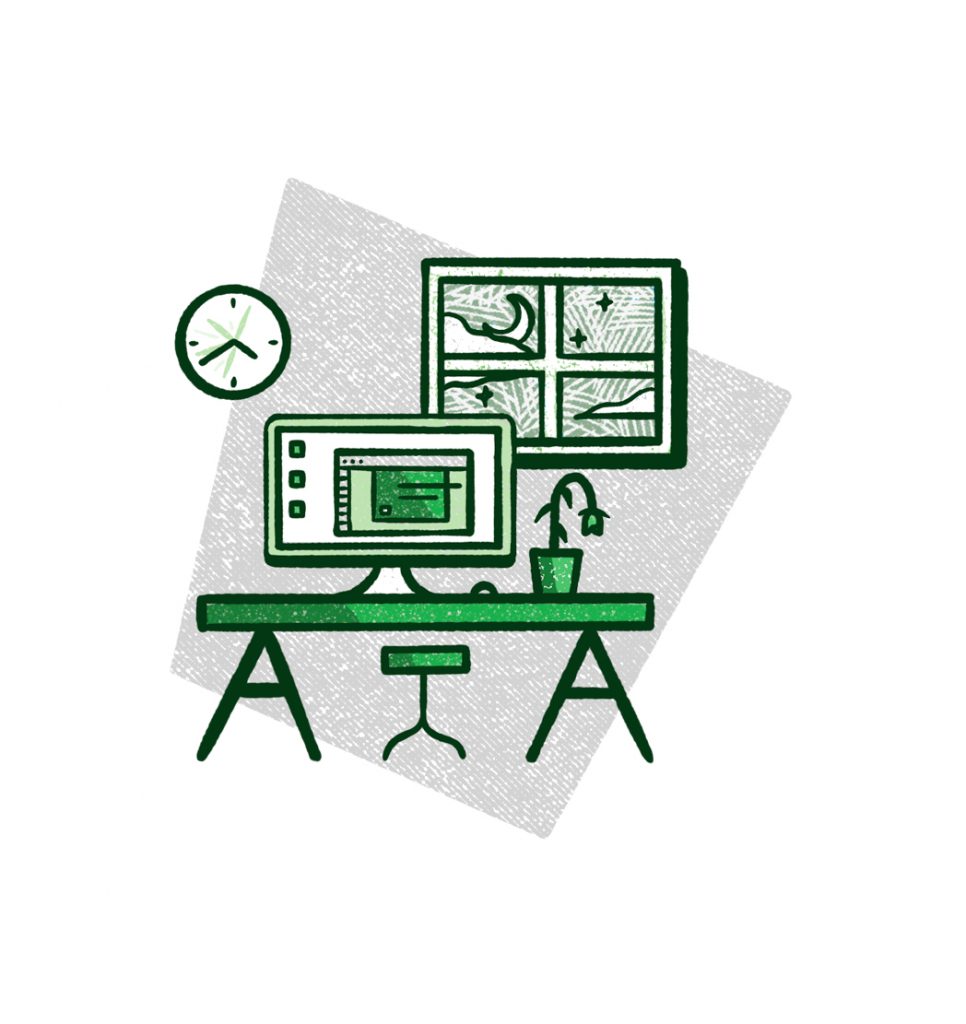
Mental Health in the Creative Workplace
The past year’s events have thrown many serious topics into the spotlight, and our mental health is one of the most important issues now being discussed broadly in mainstream spaces. While it’s sad to owe this breakthrough to periodic lockdowns, bingeing Tiger King on Netflix and the phrase ‘next slide please’ to realise this, the fact that we’re all finally free to discuss ‘how we’re feeling’ at the dinner table without fear of making things awkward is a major win nevertheless.
It’s Mental Health Awareness Week from the 10th May 2021 and we work with many clients whose primary focus is maintaining mental health and wellbeing. Now that the UK is returning to our so-called ‘new normal’, and offices are slowly filling back up, we wanted to take a look at our own industry and how sector-specific factors feed into our wellbeing and productivity. Also, how Covid has changed the landscape for many, amplifying pain points that were already there, putting into perspective what’s important in life. These new areas of focus can roughly be summarised into three things: Prospects, Places, and People.
Prospects
Every working environment has its unique stresses and the creative industry is certainly no exception. Working environments where originality & creativity often butt up against tight deadlines and harsh criticism are always going to take their toll on your mental health. Even when you’re enjoying the honeymoon period of a new client or project, this is often intersected by existing projects running in tandem that have perhaps been in development hell for the past few months. The constant ebb and flow of highs and lows mean the creative sector can leave its workers with emotional whiplash.
Much of this stems from feelings over a lack of control and one way of regaining some semblance of order is to make sure you’re understanding your personal expectations and setting clear boundaries. Many job responsibilities extend way past the initial contract you signed when you first started, and it’s important to reassess your agency’s expectations of you, against what you actually oversee in your day-to-day. If there’s misalignment, it may be time to re-evaluate your terms and ensure you’re comfortable with any extra responsibilities you’ve picked up, and if this fits in with your work/life balance. If the increased involvement is something you’re okay with, then always ensure your salary/rate increases with your growing job role. It’s easy to notice when a client project is creeping out of scope, but less obvious when the ‘project’ in question is you.
If your situation isn’t ideal, or you’ve found yourself without a job altogether as a result of the pandemic, then it’s time to look for new opportunities. Always keep a refreshed portfolio on hand, if only to remind yourself of your accomplishments when you’re perhaps not feeling as confident in your work. It’s tempting to look at other local agencies for convenience, but a job based solely on geography isn’t always the best indicator of a ‘good’ job. It’s easy to get comfy within a company and become blind to its many faults because it’s the ‘easy option’. In the creative sector, many jobs offer remote work and that may be something that works for you? As the economy opens back up, would freelancing be an option you could pursue? Also, look at the type of clients the agency works for. These are, ultimately, who you really work for. To get personal for a second, a preference of mine was to work with charities, NGOs, and community projects – good work for good people where internal profit wasn’t the primary motivator.
Places
Working from home has been a breath of fresh air for some people. So much so, they wish to remain in this working pattern for the foreseeable. And it’s not only employees. According to a recent survey, two-thirds of companies are looking at making hybrid work patterns for their staff, reporting that 71% of employers state working from home did not impact productivity negatively. This will go a long way for families and those who spend much of their day commuting to-and-from the city.
However, it’s also important to note that not all people fit into this category. For some, the missing boundary between work and home can be extremely difficult to overcome, especially those who live in smaller accommodation and whose ‘office’ consists of a sofa and a laptop perched precariously on a small coffee table. Blurred work/home boundaries is also something that can affect those on the autism spectrum too. Those who live alone also find themselves extremely isolated and rely on their workplaces to offer socialisation. It’s important to include the full range of opinions when it comes to ‘what’s best’ for work environments.
In the creative industry, there are pros and cons to working from home vs a studio environment. On the one hand, we’re well equipped to function in a digital space using online tools for sharing and collaboration. On the other, in-depth project discussions that require visual prompts and physical actions such as client website workshops, branding breakdowns, and print work are faster and more productive in person. In short, there’s no substituting pointing at something on-screen and gesturing how it should be improved.
Ultimately it should be a balancing act between you and your employer and should be treated as a more agile, case-by-case basis, as opposed to a ‘one case, fits all’.
People
It’s never as fun working alongside those you would ordinarily avoid down the pub, but it’s important to find a good working relationship with clear communication for all those jobs where collaboration is needed. If the general level of conversation outside of client work is not great –or worse, unprofessional– then it’s fine to disengage slightly. Everyone’s different and maintaining a good working relationship is more important than disagreeing over the ending of Game of Thrones. You’ll also feel much less resentful when you have to jump in and save their butt on a last-minute job.
And even when your colleagues are nice, it’s easy to let boundaries slip when you’re more inclined to do a favor for a friend. It’s important to maintain your boundaries, and most importantly, recognise when a working relationship is becoming one-sided. Find yourself working evenings and weekends, but notice it’s just you ordering late-night pizza? Maybe bring this up with your team leaders.
Overtime is a black hole that can single-handedly swallow up your social or family life, alongside having serious effects on your sleep patterns and general wellbeing. Getting into the habit of setting clear boundaries with regards to working late starts early on, with being realistic about deadline expectations. Most in-studio workers –in both design and development– are generally more practical about typical delivery times, mostly due to having more ‘on the ground’ experience with unexpected snags or general process hiccups. Keeping a good line of communication with project and account managers is key to mitigating inevitable delays that would result from overpromising, and the extra coffee needed to see the job through at 1am in the morning. If tight deadlines are persistently pushed for despite voicing valid concerns, it may be a topic to raise with the wider team.
As well as colleagues, clients take up a significant portion of your daily social interactions within the workplace. Most headaches here can be easily fixed with effective communication early on. This starts by clearly defining terms in your process, laying out expectations, deadlines, and dependencies from clients. Also learn to identify potential red flags as immediate problems to resolve, not something you can simply leave till it becomes urgent. Stopping problems before they become problems is the equivalent of doing your homework before the weekend; it may not be fun, but it beats panicking Sunday night. Resolving problems with clients early and regularly leads to less stress on both sides.
That being said, there will always be those people who not only dismiss your work as trash but who will infer from that, that you are in fact an awful person who shouldn’t be permitted to work in the creative industry ever again. There are no explanations for these people, and there is no known cure. Our only advice here is to try to finish the job quickly, part ways, and learn to identify these people in the wild. Your mental health will thank you.
Where do we go From Here?
There will no doubt be much discussion over the next few years about the changing landscape of the workplace, and balancing home and work more effectively. Some of those conversations may take a while to materialise into real change, but in the meantime, we can look inwardly and seek to improve our own individual situations where we can. There are plenty of people who feel the same so why not seek out a local community or business groups. There are also plenty of courses and training opportunities available from the likes of Future Learn to help people get back on track.
For the past couple of months, we’ve been working alongside Julia Payne and the team at thehubuk.com on producing a resource website to help guide you through the difficulties faced by creative professionals at this time. Us, along with the team at The Hub, launched the Balance website this morning and we’re pleased to see the signups rolling in. Whether it’s refinding your flow or getting your business finances in order, Balance offers a free toolkit with helpful insights, practical advice, and downloadable resources to help you navigate our new normality. We encourage anyone who’s felt muddled or under pressure this past year, to sign up and access the free toolkit provided.


